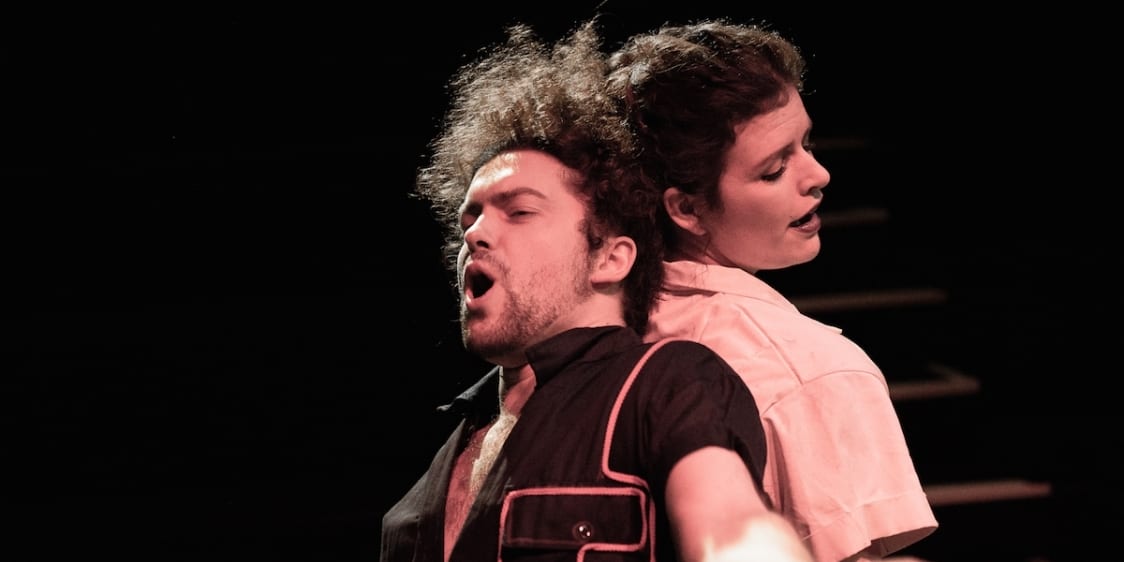La Calisto is a bit of baroque soap opera – but with nymphs and satyrs rather than barmaids and hooligans. Francesco Cavalli wrote it for the Venice Carnival of 1651 and it couldn’t offer a better illustration of the differences at that time between the artistic freedoms of the mercantile republic of Venice and the puritan regime of Cromwell’s Commonwealth in England. The opera examines – with a less than entirely serious attitude – different forms of love and desire through the lens of the mythological story of Jove and Calisto. And the music is from the period when the aria began to take its place alongside sung dialogue (recitative) in the conventional form of opera.
Calisto is a follower of the chaste huntress Diana. The god Jove lusts after Calisto and, improbably disguised as Diana, rapes her. The satyr god Pan lusts after Diana, who in turn is smitten with the beautiful shepherd boy Endymion. After encounters in which Diana rejects the love of the confused Calisto and of the ardent Endymion and of the lustful Pan, Jove’s jealous wife, Juno appears to take vengeance on Calisto (why not on Jove, one wonders). She turns her into a bear but, at the end, Jove re-appears and places Calisto amongst the stars.
Ensemble OrQuesta is developing a formidable reputation for producing gripping and authentic versions of baroque masterpieces. This production at the Cockpit Theatre is a very entertaining version of La Calisto with many strengths and only one or two minor weaknesses. The orchestra of five players, including the splendid music director Kieran Staub at the harpsichord, is quite remarkable, producing a fine baroque sound. Most of the singers seem very much at home with, and on top of, the complex demands of Cavalli’s music. As Calisto, Helen May excels. Despite the comic chaos that sometimes surrounds her, she keeps the tragic heart of the opera beating with admirable passion. And as Diana, Isabelle Haile is equally persuasive – difficult for the chaste goddess’ passion for Endymion to seem real but Haile managed this with style and with rich soprano colours in the voice. As Endymion, Eric Schlossberg offered an uncomplicated picture of the unfortunate peasant in love with a goddess and his flimsy but sweet counter-tenor voice gave a poignant flavour to the role. Also worth a particular mention is Victoria Mulley who put life and soul into the comic character, Linfea, Diana’s companion. She has a powerful voice and projects the character with force and humour.
The production has charm and director Da Silva uses every inch of the theatre-in-the-round space of The Cockpit but it shows the effect of the hand-to-mouth existence of companies like OrQuesta – just a fraction of the money lavished on the Royal Opera would give companies like this a deserved boost. The decorated boiler suits that some of the singers wear are less than ideal and the “mummers’ hobby horse” costumes for the satyrs don’t work. The bear transformation is sadly, but perhaps wisely, avoided. Best are the lighting effects that framed key moments of the action and point the way to what might have been handled better with more simplicity of design.
But these reservations are trifling when judged against the pleasure of a rare baroque opera being offered in such an accessible way to an audience that clearly relished the chance to enjoy such a gem. Even the contents of the programme notes regularly provided by Ensemble OrQuesta are of the highest standard. No praise is too high for a company that has such high ambitions and comes so close to realising them.

